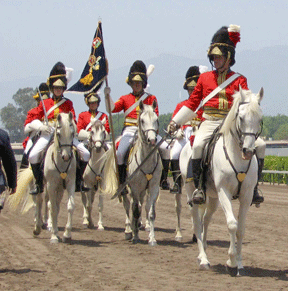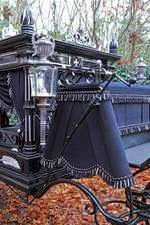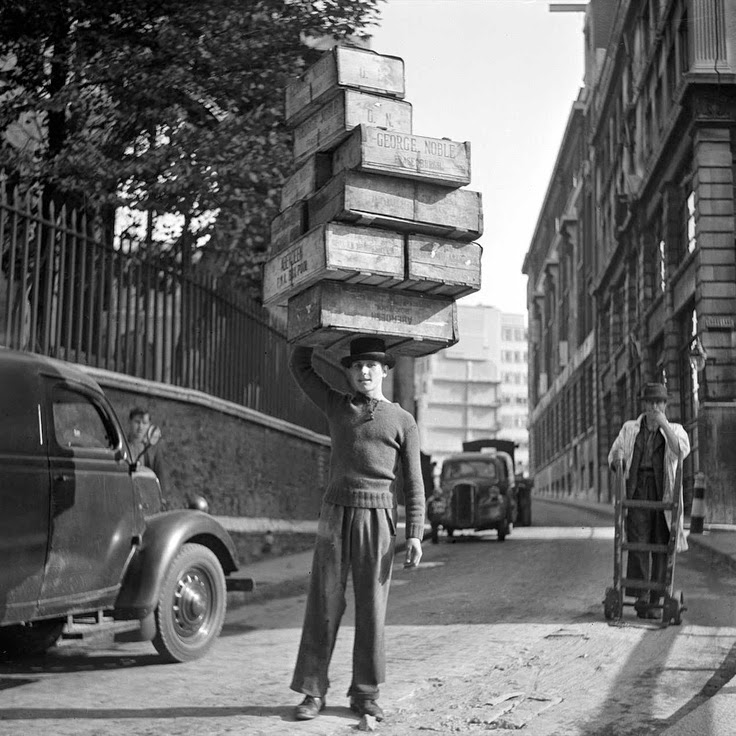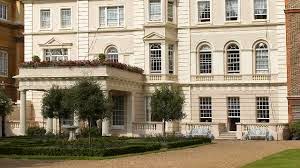Category: Kristine Hughes
WATERLOO WEDNESDAY – THE ITALIAN CONNECTION
From Adventures In Historyland
Paolo Francisco, Count De Sales, was doing a similar job to di Borgo. He was born in Savoy but he owed his allegiance to the King of Piedmont Sardinia and he is remembered as one of the men who organised the Sardinian Army. He was one of the last men on the Duke’s overstretched and badly reduced staff, still available at the end of the day.
 |
| Paolo Ruffo di Bagnaria, Prince o f Castelcicala by William Salter 1834-40. National Portrait Gallery. While serving in his father’s old position as Neapolitan ambassador, smoothing out a rather unctuous diplomatic ruffle between Naples and London, he reacquainted himself with the Duke of Wellington who greeted him as an old friend, gaining invitations to dine with him.
Despite his energy and readiness to serve he required a personal letter from the King to get him to Palermo to take the post as Viceroy, were he was faced with calming tensions that had arisen from his predecessor’s heavy handiness. He had married married the daughter of the Swiss ambassador to Paris, Madmoiselle Taddea Wilhelmina de Zeltner in 1832, and they had a daughter, Giustina Ruffo in 1839, when Wilhelmina died in 1855 he had sank into a deep depression, but he felt it his duty to obey the King.
Though a firm but conciliatory policy and his efforts to modify and modernise to make better living conditions, which included putting lights in the port cities of Sicily, building a new port at Milazzo, and decreasing taxes, he became very popular. In 1857 Commissioners reported the kingdom in a perfect state, and in 1859 he was elevated to the order of St Ferdinand. He served as chief of Staff to the Bourbon army when Garibaldi invaded Sicily, the subsequent debacle prompted the Prince to tender his resignation which was accepted, and he returned to Naples where the title of Counsellor of State was conferred on him. In 1865 he was sent to Rome to await further orders which never came due to the fall of Gatae, and he went to Paris where he stayed until his death in 1865.
While in London, between 1841 and 1852, he was a regular at the later Waterloo Banquets, where he was a welcome addition to the ever dwindling pool of officer’s that had been present at the battle. He was a guest at the very last dinner at Apsley House in 1852, where he sat on his host’s right. At the meal the Duke rose to falteringly gave his health.
“I will give you, the health of an illustrious foreigner whom I had the honour of having under my command at Waterloo, Prince, Prince ” here, unsure as how to pronounce the title he stopped, and though all knew who he meant none had the courage to prompt him. At last Lord Sandys, who, has been Lord Arthur Hill, at Waterloo called out, “The Field-Marshal gives the health of Prince Castelcicala.”
“Exactly so,” said the Duke, “That’s the name. Prince Castelcicala.”
I found out about the good Prince by accident, as I did the other Italians I mentioned, I hope you enjoyed reading about this Waterloo Man as much as I did writing about him.
Sources:
The Sydney Morning Herald (NSW : 1842 – 1954) Friday 19 Oct 1849
The Tablet, 13, 24th June 1848.
The Illustrated London News, Volume 1.
History of the French Revolution and of the Wars… By Christopher Kelly
The Battle, By Alessandro Barbero
Fifty years of my life, George Thomas Kepple.
Autobiography of Miss Cornelia Knight: Lady Companion to the Princess….By Ellis Cornelia Knight.
The Spectator, 22 JUNE 1850,
Lady De Lancey quoting Grownow http://www.gutenberg.org/files/31517/31517-h/31517-h.htm
Le Prince de Castelcicala, 1866.
|
AT AUCTION: BONHAM'S VICTORIAN CARRIAGE AND COACHES
Following on the heels of Victoria’s Friday post, Loose in London: Royal Day Out, in which she brought you our trip to the Royal Mews, we thought we’d carry on with the carriage theme – on March 7, Bonham’s Oxford auction rooms will offer Carriages, Coaches and all manner of coaching accouterments for sale by auction. You can find the complete auction listing here, but we thought we’d share a few of the highlights below. Starting breaking open those piggy banks, there are some real treasures on the block.
US$ 6,000 – 9,000
c.1800 Sedan Chair – No ReserveFOOTNOTES
- Sedan chairs reached their peak across Europe in the late 1700’s. They afforded a clean and safe means of transport to the nobility and upper middle classes. Many were kept inside houses where the owners could enter them before being carried out into the often, filthy streets.
- This sedan chair features a softwood frame construction with canvass stretched over for lightness. Externally the chair cabin is very original and would benefit from some conservation and stabilisation work. The panels depict cherubs and angels in differing scenes.
- The roof is leather covered, this is held in place with a carved moulding that has been picked out in gold leaf.
- Access to the cabin is via the front door that contains a single window, the side panels are also fitted with windows and all three can be lowered. Internally the cabin has been subject to an older restoration and is upholstered in a maroon velour material.
- A rare opportunity to acquire a sedan chair that would benefit from some conservation work.
US$ 110,000 – 140,000
Coachwork by Holland & Holland, London, England
FOOTNOTES
- Holland & Holland coachbuilders are widely regarded as building some of the finest light drags. Park Drags were used by gentlemen and ladies to attend race meetings and other events where they could be used to entertain friends and associates. Many were supplied with roof mounted picnic sets (imperials), sun shades and wine cellaretes that were contained within the rear boot.
This Park Drag is finished with a dark blue undercarriage, lower quarter panels and seat risers, the upper panels are black. The line detail is a deep red. It has been restored by Stolk of Holland and the Drag is representative of their high standard of craftsmanship. The Drag is fitted with patent mail oil axles and runs on English pattern iron shod wheels.
The passenger compartment is accessed on each side via door with a folding body step. The doors have a brass ‘T’ handle and there is a ivory plaque at the bottom of each door bearing the builders name. Internally the seat cushions and seat backs are upholstered in a blue wool cloth with blue tufted surface buttons and dark blue broad lace surrounds. The original oil cloth headlining has been preserved and brown leather hat straps are fitted. The window frames are finished in a blue wool cloth. Shutters are also contained within the door window recess, the nearside shutter is fitted with an internal mirror. The front internal seat back is hinged and lifting this gives access to the front boot that contains a comprehensive spares kit that includes a new set of brake shoes and supports for the roof mounted imperial. The rear boot contains correct type mahogany wine cellarets with zinc liners, with a top drawer for glasses/nappery
With the exception of minor cracks to the toe board and front boot the external coach painted mahogany panels are in very good condition. The external cushions are upholstered in blue wool cloth and the seat frames are bound in plain black leather. The roof seat lazy backs are hinged and give access to the roof mounted imperial (picnic set). With the top of the imperial removed the sides unfold to provide trays and a picnic platform. The foot platforms are covered with leather edged lino with protective pierced rubber over mats. The Coachman’s toe board has a brass watch case mounted on it. A black wicker umbrella basket is fitted to the near side rear seat frame. The coachman’s seat frame has a tan leather whip holder and tan leather passenger grab handles are fitted to all roof seats. Two spare bars are strapped to the rear of the grooms seat frame and a folding passenger ladder is hanging on the underside of the groom’s seat. There is a coachman operated hand brake that acts on the rear wheels.
The Drag is complete with lamps (no makers name),a single lense toe board lamp team pole and bars and drag shoe. It represents a wonderful opportunity to compete at the highest level in the Coaching classes for many years to come.
US$ 30,000 – 38,000
Coachwork by Forder & Co, London, England
FOOTNOTES
- Designed to convey members of the public in safety and comfort Hansom cabs became a common site of the streets of London. Today Hansom Cabs are strongly associated with late Victorian crime writers and feature in many of the famous Sherlock Holmes books. Several companies built hansom cabs but it was the coachbuilders Forder & Co who developed the best known design of Cab and the award of several medals meant that they were favoured by cab proprietors. Designed to carry two passengers the driver sat high up on the rear mounted external seat.
This Hansom Cab is finished with a light green under carriage and a contrasting dark green line. The upper body panels have been conserved and are painted black. The cab is fitted with patent collinge oil axles and runs on rubber shod warner band type wheels.
The passenger compartment is accessed via double opening doors, these are operated by the driver who would pull the leather window strap thereby ‘unlocking’ the doors and allowing the passenger out, prior to payment of course!, which would have been made via the small roof hatch to the rear of the passenger compartment. The seat cushion and back are upholstered in a dark green wool cloth with matching broad lace edging. The remaining surface areas are also finished in a dark green wool cloth. The metal fittings in the compartment are silver plated and there is a builders plaque mounted on the rear seat back stating that the cab is ‘Public Cab Patent Number 2209 Royal Hansom’. There are ivory surrounds attached to two side mirrors and a rare communication whistle is also fitted so that the driver could be alerted.
Externally the driver’s seat is upholstered in a green wool cloth. The roof and upper panels have been conserved but they would have originally had a highly japanned finish. The dash board is covered in polished leather and the passenger boarding platform is fitted with a pyramid rubber mat. The cab would have been drawn by a single large horse and the shafts are ash with supporting ironwork. On the underside of each step there are extended supports that the cab would have rested on when not in use. Original correct type lamps are fitted to the Cab but they do not bear the builders name.
US$ 300,000 – 450,000
c.1835 Traveling Landau
Coachwork by Adams & Hooper, London, England
FOOTNOTES
- This outstanding carriage has been the subject of one of the most impressive restorations carried
out in recent years.Adams and Hooper were founded in 1805 and soon built up a reputation for building the finest carriages. From their premises in Haymarket, London, carriages were built for wealthy patrons the world over. By 1830 the company held the Royal Warrant.
Travelling Landaus were used by the nobility on extended tours throughout Britain and Europe. Designed to carry their owners in comfort over long distances they proved to be an ideal carriage prior to the introduction of the railways.
Ordered by the Royal Mews from Adams and Hooper for King William IV the Landau was delivered in 1835. The carriage would have been used by trusted representatives and possibly the King himself when undertaking long journeys. Other carriages and out riders would have formed part of the travelling entourage to carry luggage, servants and official documents. It is likely that the Landau was delivered with a detachable coachman’s seat and hammer cloth, however over the course of time this has been lost. In its current configuration the Landau is arranged to by driven by postilion riders. It is uncertain why postilion riders came into being but one theory is that it allowed the occupants of the carriage to have ‘open’ conversations without fear of being overheard by the coachman. The Landau was sold by the Royal mews in the early part of the 20th Century. Following its sale from the Mews its history is uncertain but it was probably saved because of its ‘Royal’ history and provenance. Eventually it was acquired by the famous American collector James Coson and is featured in the book of his collection published in 1989, complete with a foreword from His Royal Highness Prince Philip. When the Coson collection was sold its new owner decided to restore the Landau to its original specification. The carriage was sent to the renowned restorers Stolk of Holland who over a period of time returned the Landau to its rightful former grandeur.
The Landau is resplendent in its Royal Colours of red under carriage with gold leaf lining and black flank detail, deep royal claret body panels with Royal crests and insignia and leather front and rear boots. Mounted on ‘C’ springs with leather braces the body has additional rope through braces allowing the carriage to cope with the roughest of roads. Strong grease axles are fitted and the Landau runs on iron shod English pattern wheels.
Access to the passenger compartment is made via double folding steps and doors from either side. A footman would have first lowered the windows or shutter, opened the door and then unfolded the carpeted steps, once safely inside the footman would have folded the steps back into position and then closed the door making sure that the glass strings were not caught in the step recess. Inside the carriage the seat cushions and back are upholstered in a deep blue brocade with surface buttoning. The doors, seat falls and hood linings are finished in a dark blue wool cloth, and beautifully woven bespoke 3 inch broad laces are used to edge the cushions, door surrounds and glass strings. Each door contains a blue wool cloth trimmed window and separate shutter with a brass makers name plate. The louvres for each shutter can be adjusted by a small brass ratchet set into the varnished frame. The individual shutters are finished in red with a broad gold leaf line with fine black flank lines.
Externally the Landau has been beautifully coach painted, period coach painting books often describe the finished panels of carriages as having a ‘glass like depth’ to them and ground pumice would have been used to polish out small particles of dust. The panels on the Landau are a true reflection of the finish achieved by the very best coach painters some 150 years ago. The lower claret body panels and doors feature hand painted royal coats of arms and insignia detail. Each will have been painted directly onto the panel by hand and will have taken several hundred hours to complete; they have then been varnished over for protection. To the front of the carriage there is a leather covered ‘Salisbury boot’ adorned with four brass crowns, access is via the front hinged lid and it would have been used to store spares for the coach and harness when travelling
Beautifully detailed lamps are attached directly to the front folding hood, they have been silver plated internally and have a small royal crown on each candle font, larger brass crowns sit atop each lamp.
The folding leather hoods are held in position by black hood jacks and three brass royal insignias are fitted along the top edge of each hood side panel. The leather hood covering has been hand stitched into position, the raw leather seams have been ‘plain bound’ in the correct fashion and the whole structure is fastened in position with brass pin bead. To the rear of the main body there is a leather covered ‘sword case’, gentlemen travelling in the Landau would have been expected to remove their swords and to have placed them within the ‘sword case’ which is accessed via a hinged rear seat back panel.
At the back of the Landau there is a leather covered Rumble seat where two footmen would have sat, the seat is mounted on leaf springs to give some comfort during long journeys and is upholstered in a dark blue wool cloth. The area underneath the seat provides additional storage and is accessed via the hinged rear flap.
The under carriage is finished in red with gold leaf detail, on each corner there is a large ‘C’ spring. Hand stitched leather braces run around the outside of each spring to support the body, the height of which is adjusted on large ratchet adjusters. Additional leather covered rope bracing runs the length of the Landau to control the front to back movement of the body, whilst on the underside of the body there are two further leather straps that control the side to side ‘sway’.
Hanging from the perch there are three separate devices to control the Landau when descending or ascending hills and stopping. The first is a drag shoe that would have been used as a skid to lock up the rear nearside wheel when descending a hill. The second is the small hinged red pole, called a drag staff, that would have been lowered onto the ground when ascending a hill, if the Landau had to stop for any reason the pole would have dug into the road surface to stop the carriage from rolling back. The last item is the leather covered hook, this would have been used as a parking brake with the hook placed around a wheel spoke.
The Landau is a truly wonderful piece of early Royal transport and the restoration work carried out to return it to its former glory is unlikely to be ever repeated again.
US$ 7,500 – 12,000
Coachwork by H. Topig Wagenbau, Leuba stritz, Germany
FOOTNOTES
- The use of horse drawn hearses reached its peak in the early 1900’s. European hearses tended to be more ‘gothic’ in design, often featuring heavily carved timber hammercloths, more elaborate head pieces along the upper edges of the body and seldom had glass side panels.
The hearse is finished in black throughout with silver leaf applied to the ornate carvings and lining detail. The hearse is fitted with patent collinge oil axles and runs on iron shod wheels.
The rear coffin here has been lined out with black wool cloth. The side openings feature black wool cloth swags and drapes that are edged with a silver and black bullion fringe. The here is accessed via a folding rear step and a hinged section of steel grating and is fitted with a runner mounted coffin plate.
Externally the solid timber hammer cloth and coachman’s seat are upholstered in black wool cloth throughout. The coachman’s toe board is fitted with a rubber mat. The roof features a decorated silver leaf urn that is fitted over a faux leather oil cloth covering. Original hearse lamps are fitted to the coachman’s seat.
The hearse has been completely restored by Stolk of Holland and presents an ideal opportunity to purchase useful carriage for future use!
WATERLOO WEDNESDAY: GREYS AND GLORY

LOOSE IN LONDON: FROM THE RIVER TO CLARENCE HOUSE
As you’ll recall, Victoria and I lucked out with gorgeous weather for our mudlarking adventure.
We decided to up towards Gabriel Wharf for a bite of lunch and on our way we passed a few landmarks you may recognize.
After lunch, we needed to get back across the River, so we walked out the back of the Wharf to a street known as the Upper Ground. This is where the docks once stood where, once upon a time, the streets teemed with a decidedly rough and ready trade – sailors who had just docked after months at sea and who were looking to let loose, ladies of the night (or day) looking to make a bit of coin, foreigners of all sorts seeking to sell or buy cargoes of exotic goods, street hawkers, cab men, coster mongers, fishermen, boatmen, etc. etc. The ships drove the neighborhood and the streets would have been awash in people of all stripes. Today, however, these were the sights we were met with.
Of course, this is more the way I was picturing it in my mind
“Where are we going?” Victoria finally asked.
“Waterloo. Station. And the Duke of Wellington Pub.”
“Do you know the story about Churchill and Waterloo Station?” Victoria asked me.
“I don’t think so.”
“Before he died, Churchill worked on the plans for his own funeral. He was going to be buried at St. Martin’s Church in Bladon, in Oxfordshire, where many members of the Spencer Churchill family had been buried.”
“So,” Victoria went on, “Churchill’s fune
ral cortege would have traveled to Oxford by train. And trains to Oxford leave from which London station?”
“Paddington,” I answered.
“Exactly. But Churchill asked if it would be possible for his funeral train to depart from Waterloo Station, instead. Certainly, and official told him. It would mean diverting tracks and re-route thousands of daily tube passengers, it would involve redirecting signals and a host of other alterations, but in theory it could be done. Looking pleased, Churchill told him to arrange it when the time came. But why, asked official. What did Churchill have against Paddington Station? Nothing, he replied, but no doubt other countries would send heads of state to attend the funeral. France would no doubt send a representative, to which the official agreed. “Well,” Churchill said, “I don’t want to pass up the opportunity to force French President de Gaulle to have to walk through Waterloo Station.”
“Are you making this up?”
“No,” Victoria laughed, “If it isn’t true, it should be. Where are we going? Are you sure Waterloo Station down this way? It doesn’t look right.”
“The last time I walked this way, I wound up at Waterloo. It’s just down here,” I said, pointing.
Two girls were passing and Victoria asked them if this were the way to Waterloo Station. They told that indeed it was, and pointed in the direction I’d just indicated.
“Oh, ye of little faith,” I said. “And look, there’s the Wellington Pub. They haven’t moved that, either.”
And believe it or not, this is the poster we were met with inside the station, advertising the Wellington Exhibit we’d planned to see at the Tower. Nice to know I had unconsciously dressed to match Wellington’s uniform. He had Wellies, I have fur lined boots.
With still more on the day’s schedule ahead, we headed out onto Buckingham Palace Road and headed towards Buckingham Palace, passing one of our old haunts, the Bag O’ Nails pub, along the way.
Before long, we’d reached the Queen’s Gallery, where Victoria and I have attended many an exhibition. There’s another old haunt of ours just outside the Gallery – a long, low wall just perfect for resting upon, so we decided to take a short sit before going on.
After our break, we carried on, finally reaching the front of the Palace.





















.jpg)
.jpg)
.jpg)

